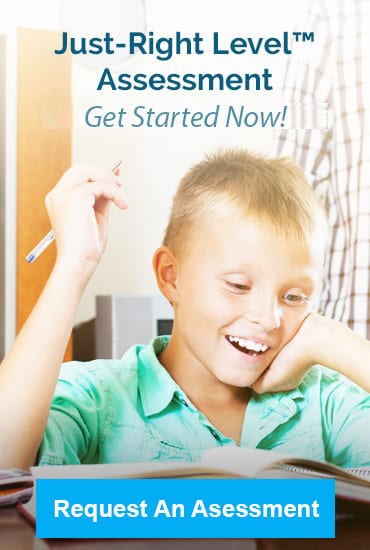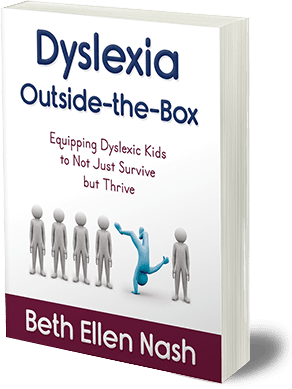Phonological and Phonemic Awareness Assessment and Exercises

The point of all of the following phonological and phonemic awareness assessment and activities is for the student to focus on and manipulate the sounds within words, not read the letters, symbols, and words. This skill is completely oral and auditory. You can use it as a phonemic awareness assessment to get a feeling for whether this foundational layer of skills needs to be directly addressed. You can also make up additional exercises following the patterns provided to begin intervention.
Short daily practice with these kinds of phonological and phonemic awareness exercises at the preschool and kindergarten levels, and for any older student who is not yet strong in these skills, is very important. It can be in a five- to ten-minute practice session or casually incorporated as you go about life together. Phonological and phonemic awareness is one of the best predictors of reading success, and therefore of success in school.
If your older child is still having substantial difficulty with these exercises after working on them for several weeks, you may need to explore whether they have auditory processing issues. (see related article on Auditory Processing Disorder)
Rhyming
- Say a word and have the student repeat it. Then ask the student to say a word that rhymes with it. (hat, cat, sat, rat, fat, flat)
- Say a pair of words and ask the student whether or not the two words rhyme.
Sound-Providing
- Say a word and ask the student what sound they hear at the beginning of it.
- Say a word and ask the student what sound they hear at the end of it.
- Say a word and ask the student what sound they hear in the middle of it.
Sound Categorization
- Ask, “Do you hear [specific sound] in [specific word]?” For example:
- “Do you hear /t/ in bat? (yes)
- “Do you hear /t/ in ball? (no)
- Ask, “Which word begins with [specific sound] in [two specific words]?” For example, “Which word begins with /b/ in cat, ball?
- Say the target word and have the student repeat it. Ask, “Which one of these words has the same beginning sound as [target word]: [word 1, word 2, (word 3)]?”
- For example, “Which one of these words has the same beginning sound as hat: cab, had?
- After the student has mastered two choices, proceed to providing three choices.
- Say the target word and have the student repeat it. Ask, “Which one of these words has the same ending sound as [target word]: [word 1, word 2, (word 3)]?”
- For example, “Which one of these words has the same ending sound as dog: pig, kit?
- After the student has mastered two choices, proceed to providing three choices.
- Say the target word and have the student repeat it. Ask, “Which one of these words does not begin the same as [target word]: [word 1, word 2, (word 3)]?”
- For example, “Which one of these words does not begin the same as kid: dig, king?
- After the student has mastered two choices, proceed to providing three choices.
- When the student has become good at the previous variation, use the following: “I will say three words. Tell me which of these words has a different beginning sound. Wait until you hear all the words before you tell me which word does not begin the same as the others.” This is a slight wording change that means about the same as the previous “does not begin the same” (versus “different beginning sound”), but it’s important for the student to become comfortable with both.
- Say the target word and have the student repeat it. Ask, “Which one of these words does not end the same as [target word]: [word 1, word 2, (word 3)]?”
- For example, “Which one of these words does not end the same as star: car, storm?
- After the student has mastered two choices, proceed to providing three choices.
- When the student has become good at the previous variation, use the following: “I will say three words. Tell me which of these words has a different ending sound. Wait until you hear all the words before you tell me which word does not end the same as the others.” This is a slight wording change that means about the same as the previous “does not end the same” (versus “different ending sound”), but it’s important for the student to become comfortable with both.
Blending
For these exercises the student will need small manipulatives such as colored blocks, felt circles or squares, beans, or bingo chips, in six different colors, with two each of at least one or two colors. The student should eventually do these types of blending exercises without needing the manipulatives, however, the manipulatives are very helpful in the early stages.
Compound Words
- Say each pair of compound word segments (such as cup * cake), pausing between them.
- Have the student repeat the segments using a manipulative to represent each one.
- Have the student blend the segments by pushing the manipulatives together and saying the word as a whole.
Syllables
- Say each pair of syllables (such as pic * nic), pausing between them.
- Have the student repeat the segments, using a manipulative to represent each one.
- Have the student blend the segments by pushing the manipulatives together and saying the word as a whole.
Onset and Rime
- A rime is a vowel and what comes after it in a syllable. An onset is what comes before the vowel. If two words have the same rime, they rhyme.
- Say each onset and rime pair (such as r * at), pausing between them.
- Have the student repeat it, tapping a block for the onset and tapping again for the rime.
- Have the student blend the segments by pushing the manipulatives together and saying the word as a whole.
Segmentation
Sentences
- For this exercise the student needs a piece of paper and a pencil, or a whiteboard and a marker.
- Dictate a three- to five-word simple sentence such as:
- “The man sat.”
- “Dan has a fat cat.”
- Ask the student to make a dash for each word. The idea is for the student to distinguish words as distinct from sounds or syllables.
Syllables
Say each word and ask the student to repeat it, clapping and counting the syllables. If they have trouble hearing the syllables, have them put their hand beneath their chin and count how many times it drops as they repeat the word. The jaw drops with each vowel sound and each syllable has only one vowel sound.
Phonemes
Say each word and ask the student to repeat it, tapping and counting the sounds, and then saying the word slowly, sound by sound.
Deletion
Compound Words
- Say the target compound word and have the student repeat it. Then say, “Say [target compound word] again, but don’t say [either the first or second half].
- For example, “Say hotdog, but don’t say dog.” The student should say “hot.”
Syllables
- Say the target two-syllable word] and have the student repeat it. Then say, “Say [target two-syllable word] again, but don’t say [either the first or second half].
- For example, “Say pumpkin, but don’t say kin. The student should say “pump.”
Phonemes
- Say the target three- to five-letter word and have the student repeat it. Then say, “Say [target word] again, but don’t say [single sound].”
- For example, “Say ham, but don’t say /m/.” The student should say /ha/ with short a sound.
- A more complicated example is “Say stand, but don’t say /t/.” The student should say “sand.”
Substitution
Compound Words
- Say the target compound word and have the student repeat it. Then say, “Say [target compound word] again, but instead of [either the first or second half], say [replacement word part that makes another compound word].
- For example, “Say pancake, but don’t say pan, say cup.” The student should say “cupcake.”
Syllables
- Say the target two-syllable word and have the student repeat it. Then say, “Say [target two-syllable word] again, but instead of [either the first or second half], say [replacement word part that makes another two-syllable word].
- For example, “Say mitten, but don’t say mit, say kit.” The student should say “kitten.”
Initial Sounds (Phonemes)
- Say the target three- to five-letter word and have the student repeat it. Then say, “Say [target word] again, but instead of [single sound], say [another single sound that makes a real word].
- For example, “Say bag, but instead of /b/, say /t/. The student should say “tag.”
Final Sounds (Phonemes)
- Say the target three- to five-letter word and have the student repeat it. Then say, “Say [target word] again, but instead of [single sound], say [another single sound that makes a real word].
- For example, “Say ham, but instead of /m/, say /d/. Student should say “had.”
Mixed Practice
- Place three blocks or chips of different colors on the table.
- Say the first word to the student and have them repeat it.
- Then say, “I want you to change [first word] to [second word with only sound change].
- Have the student change one block to another color to show which sound in the word has changed, and then say the new word.
- Here’s one example sequence to work through: ant, ants, pants, pant, plant.



